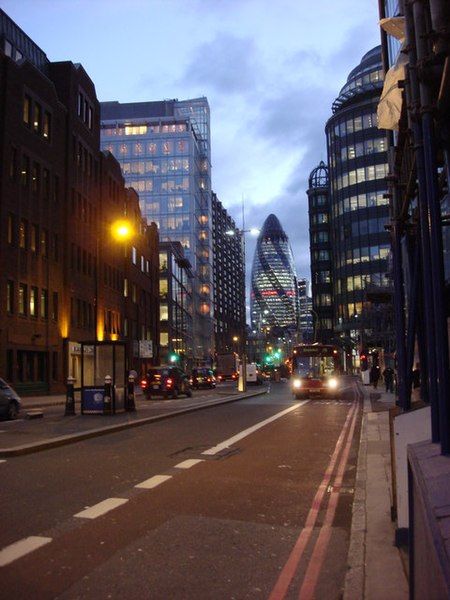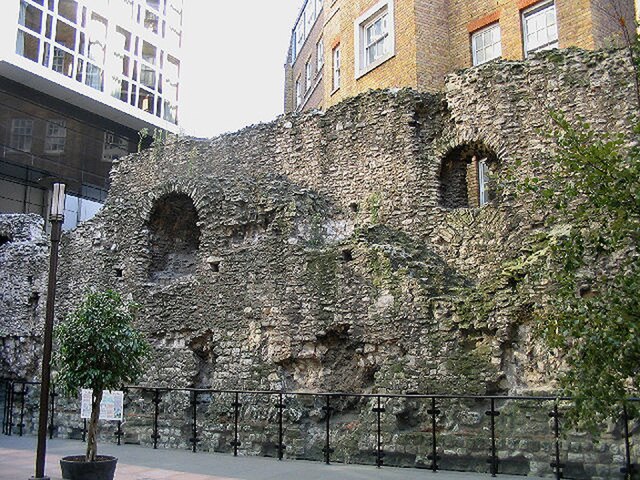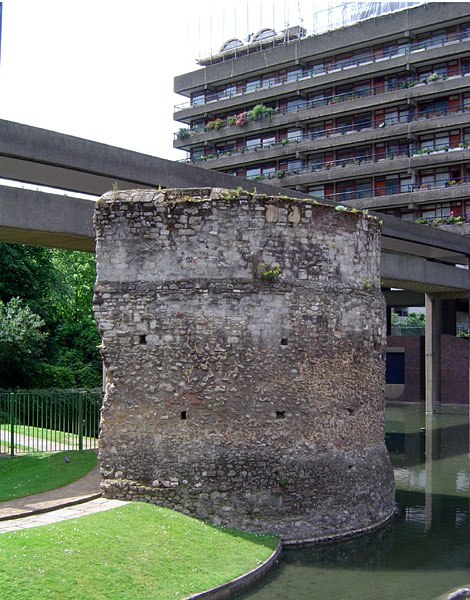Bishopsgate was one of the eastern gates in London's former defensive wall. The gate's name is traditionally attributed to Earconwald, who was Bishop of London in the 7th century. It was first built in Roman times and marked the beginning of Ermine Street, the ancient road running from London to York (Eboracum). The gate was rebuilt twice in the 15th and 18th centuries, but was permanently demolished in 1760.
St Erkenwald, Saxon Prince, bishop and saint known as the "Light of London": Bishopsgate is thought to be named after him, and he is understood to have restored the gate
St Botolph-without-Bishopsgate lay immediately north of the original Bishopsgate, and of the defensive ditch around London's Wall.
The frontage of Paul Pindar's house on Bishopgate is preserved in the Victoria and Albert Museum.
Looking south from Norton Folgate down Bishopsgate
The London Wall is a defensive wall first built by the Romans around the strategically important port town of Londinium in c. AD 200, as well as the name of a modern street in the City of London, England.
London Roman Wall – surviving section by Tower Hill gardens cross-section
A surviving fragment of the original 3rd-century Roman Wall in Cooper's Row near Tower Hill
Bastion 12, which is near the Barbican Estate, stands on Roman foundations with an upper structure of 13th-century masonry.
Yorkist forces attack the Lancastrians during the siege of London, 12–15 May 1471.








